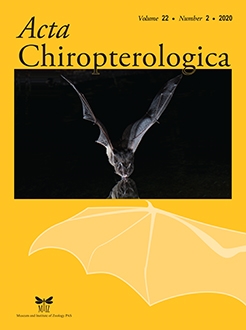In view of the great diversity of dietary habits among bats, and the need for morphological adaptations in their digestive system, this study characterized and compared the morphology of the small (SI) and large intestines (LI) of the bats Artibeus planirostris (Phyllostomidae: Stenodermatinae) and Diphylla ecaudata (Phyllostomidae: Desmodontinae), and interpret their morphologies in the context of dietary differences. We hypothesized that diet could influence the morphological characteristics in these two species by means of a more complex intestinal morphology in A. planirostris than in D. ecaudata. The intestines were histologically processed, stained, and analyzed. Despite body mass differences, total intestinal length were almost two folds higher in A. planirostris than in D. ecaudata, and the intestinal coefficient, which quantifies the investment in intestines in relation to the body mass, wasn't statistically different. Macroscopically, no distinction was observed between the SI and LI, and few differences allowed to distinguish histologically the regions of the SI in both species. We found a typical organization of Peyer's patches only in D. ecaudata. Enteroendocrine cells were more frequently observed at caudal parts of the small intestine in both species. In A. planirostris, the SI diameter, the thickness of its wall, and the thickness and percentage occupied by the mucosal layer, as well as the wall thickness of its LI, were greater than those in D. ecaudata. Circular folds were observed only in the LI of A. planirostris. We speculate that these differences represent strategies to increase the contact surface available to optimize nutrient uptake in A. planirostris; while the hematophagous feeding habit of D. ecaudata, predominantly proteinaceous and semifluid, has a gut wall characterized with less morphological complexity and specializations; which confirms our hypothesis. Based on the similarities and differences founded, it can be concluded for both species that the reduction in the anatomical structures, associated with the microscopic findings, allows to optimize the absorption of nutrients and water in these bats when compared to other mammals; a similar pattern to that found in other chiropterans.
How to translate text using browser tools
1 December 2020
Comparative Study on the Small and Large Intestines of the Bats Artibeus planirostris and Diphylla ecaudata: Influence of Food Habits on Morphological Parameters
Carlos H. S. Silva,
Maria S. M. Amarante,
Eugenia Cordero-Schmidt,
Juan C. Vargas-Mena,
Marília A. S. Barros,
Sirlene S. R. Sartori,
Danielle B. Morais
ACCESS THE FULL ARTICLE

Acta Chiropterologica
Vol. 22 • No. 2
December 2020
Vol. 22 • No. 2
December 2020
Chiroptera
feeding habit
gut
Histochemistry
intestinal coefficient
morphometry




